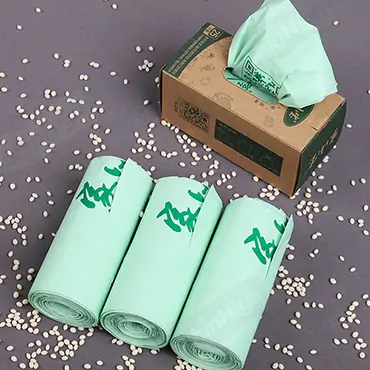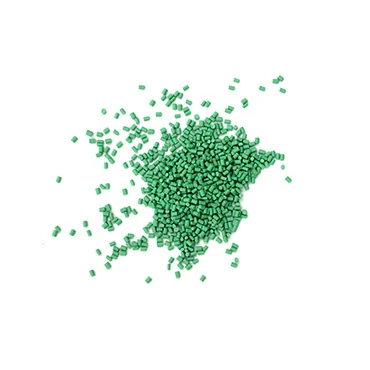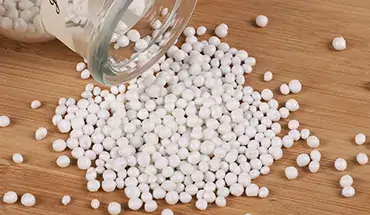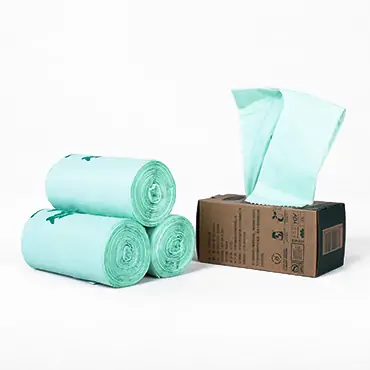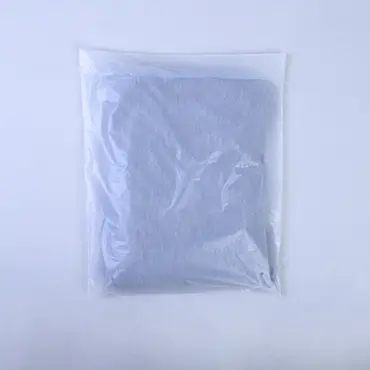Why Biodegradable Seedling Bags Matter
In modern horticulture and forestry, seedlings are crucial for plant growth. High-quality seed starting containers and trays help develop strong seedlings and ensure trees grow well and are resilient.
For many years, seed starting kits relied on plastic bags and rigid trays. Though they seemed effective at first, they stopped roots from growing properly, causing long-term problems.
Now, better and eco-friendly containers are needed. At this important time, biodegradable bags have arrived as a new solution. These compostable bags mix good performance with sustainability. They are not just containers; they help create a greener, more productive future.
Advantages of Biodegradable Seedling Bags
Imagine a seedling container that helps the soil, boosts root health, and cuts down plastic waste. This is what biodegradable seedling bags offer.
-
Roots Grow Freely with Biodegradable Seedling Bags
One of the most compelling benefits of compostable seedling bags lies in their remarkable ability to prevent roots from forming into a dense, tangled mass. Plastic plant trays, with their rigid and non-degradable composition, often restrict the natural growth of the root. This restricted growth not only limits the available space for root development but also significantly impairs the root system’s efficiency in absorbing vital water and nutrients.
Biodegradable bags are made from natural materials. Roots can easily grow through them, spreading out naturally. This prevents tangling and ensures healthy growth from the start. Roots can explore and expand, creating a strong system for the plant’s overall development.
-
Direct Growth and Bypassing the Hardening Seedlings
Perhaps the most astonishing characteristic of seedlings grown in compostable bags is their ability to transition seamlessly into a rapid growth phase immediately after transplanting, effectively eliminating the frustrating “hardening off” often observed with conventionally grown seedlings.
This remarkable feat is attributed to the formation of healing tissue within the root system during its growth inside the bags. As roots reach the edge of the container and are naturally air-pruned, a protective layer of healing tissue develops at the tips. These root segments, equipped with this healing tissue, possess the unique ability to root rapidly and explosively upon contact with the surrounding soil. Simultaneously, the above-ground portion of the seedling exhibits vigorous and accelerated growth.
This ability helps seedlings adapt quickly, boosting survival rates in reforestation. No other container matches this success. Biodegradable bags let seedlings thrive from planting, maximizing their growth and survival chances.
-
The Black Charm: Heat Absorption and Insulation for Accelerated Growth
Compostable seedling bags are often made black on purpose. The black color soaks up sunlight during the day, making the bag warmer. This warm environment helps the roots grow well.
At night, the stored heat slowly comes out, keeping the bag warm. This stops big temperature changes and helps the seedlings grow steadily. The black color also blocks direct sunlight, reducing water loss. This keeps the fertilizer and moisture inside, providing the best growing conditions.
-
Breathable Holes for Gas Exchange
Ventilation holes in these bags are important too. These holes not only optimize the gas exchange environment for the root system but also encourage the activity of beneficial soil microorganisms.
The result is an improved ecological function within the surrounding soil. Good air permeability is essential for healthy root respiration and even the prevention of root diseases. This further enhances the overall growth quality and resilience of the seedlings, preparing them for a successful transition into the wider environment.
-
Biodegradable Seedling Bags for Safe Transport
Recognizing the practical demands of seedling transport, compostable bags are typically engineered with a thickened design to enhance their tear resistance and overall durability. This robust construction not only safeguards the integrity of the bag during long-distance transport, minimizing breakage rates and potential losses but also ensures the safety and well-being of the delicate seedlings contained within. This quality lays a solid foundation for subsequent reforestation efforts and ensures that the seedlings arrive at their destination in optimal condition, ready to thrive in their new environment.
-
Versatile for Different Plants
Compostable seedling bags boast an incredibly versatile range of applications, making them suitable for diverse horticultural and forestry projects. Whether you’re involved in large-scale seedling nurseries, or the meticulous cultivation of saplings, flowers, fruits, and vegetables, you can find a compostable bag of the perfect size and specification to meet your specific needs.
The availability of diversified size options allows for precise tailoring to the unique requirements of various projects, from research and development to large-scale commercial production. This adaptability makes compostable seedling bags an invaluable asset for a wide array of planting endeavors.
-
Non-Toxic and Compostable
Perhaps the most compelling aspect of compostable seedling bags is their commitment to environmental responsibility. Constructed from completely non-toxic materials, these bags naturally decompose and return to the soil after use, leaving no harmful residues behind.
This biodegradability not only eliminates the burden of plastic waste on the environment but also enriches the soil with valuable nutrients, acting as a natural fertilizer for plants. The bags’ impressive toughness and durability are not achieved at the expense of environmental responsibility. Rather, they are a testament to the advanced bio-based material technology employed in their production, striking a perfect balance between performance and environmental stewardship.
-
Choosing the Right Size
Choosing the correct bag size is key. Small bags (10-15 cm) are good for flower and vegetable seeds. Larger bags (20-50 cm) are best for tree seedlings. Careful consideration of these factors will ensure that your seedlings have ample room to develop a strong and healthy root system, maximizing their chances of success in their new environment.
The Future is Green
In summary, the compostable seedling bag is quickly becoming the top choice in modern nurseries. It combines good performance with care for the environment. This bag solves problems with plastic plant trays. It’s eco-friendly, efficient, and easy to use, helping horticulture and forestry become more sustainable.
As technology improves, these bags will greatly help the global greening effort. By using them, you’re not just planting trees; you’re creating a better future for everyone. This is not just a new container; it’s a new way of thinking about plant care. Choose biodegradable seedling bags now and join the green revolution.

